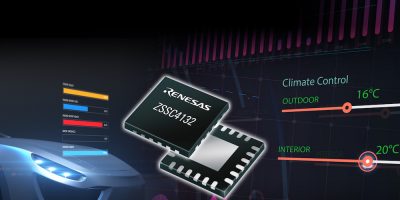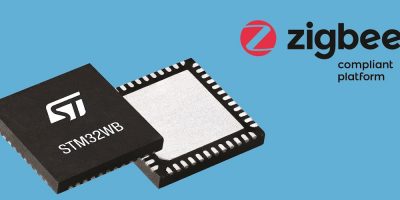An integrated LIN interface sensor signal conditioner, the ZSSC4132, is claimed to deliver best in class performance in a compact form factor for us in climate control systems for plug-in hybrid electric vehicles (PHEVs), battery electric vehicles (BEVs) and fuel cell electric vehicles (FCEVs).
The automotive pressure sensor has an integrated, certified LIN v2.2a interface and backwards compatibility to LIN v1.3, v2.0 and v2.1. The single-package sensor signal conditioner (SSC) can be configured for nearly all resistive bridge sensors, says Renesas. Slave node position detection feature at the LIN bus allows the SSC to assign a unique ID to the device
It has integrated LIN PHY, AEC-Q100Grade 0 qualifications and is in a small package footprint suitable for automotive sensor modules where space and budgets are limited.
The availability of a LIN-certified sensor enables OEMS to easily and cost-effectively scale HVAC system development for mid-range to high endEVs and HEVs, said Christian Wolf, vice president, Automotive Sensor Business Division at Renesas.
The ZSSC4132 combines 12 to 14bit ADC resolution and analogue front end (AFE) technology for enhanced sensor signal conditioning as well as digital calibration to reduce the noise sensitivity and deliver accuracy to ±0.5 per cent for pressure and temperature readings from -40 to +150 degrees C, claims Renesas. The SSC’s integration reduces overall bill of material (BoM) requirements by minimising the need for external components. Its digital calibration feature allows customers to minimise calibration efforts, further reducing overall system costs, added the company.
It also include over-voltage and reverse-polarity protection circuitry, electromagnetic compatibility and multiple diagnostic features.
The ZSSC4132 is available now in a 4.0 x 4.0mm, 24-lead QFN package. An evaluation kit for the ZSSC4132 is also available.
Renesas Electronics provides embedded design with semiconductors that enable billions of connected, intelligent devices to enhance the way people work and live. The company specialises in microcontrollers, analogy, power and SoC products intended for a broad range of automotive, industrial, infrastructure and IoT applications.







